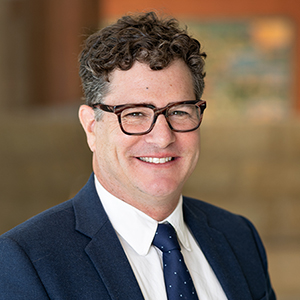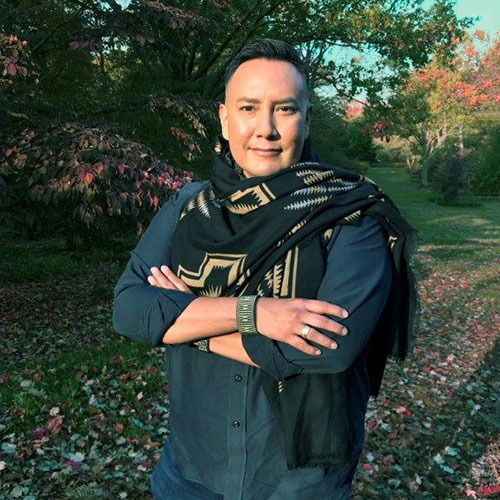Photo courtesy of Tailyr Irvine for the Minneapolis Fed
For Native people living in rural areas with scarce housing stock, manufactured units can be a practical homeownership choice. Manufactured homes tend to have lower purchase prices than site-built houses. Delivered on-site as finished home structures, they also avoid the costs associated with from-scratch construction in remote places.
Financing these manufactured homes, though, can cost Native borrowers on reservations two times what it would cost a white borrower off reservation.
New research from the Center for Indian Country Development (CICD) at the Minneapolis Fed found that use of home-only loans, a type of manufactured home loan that costs more over time, fuels this significant gap.
But despite these research findings, one key question remains: Why are these borrowers ending up with home-only loans in the first place?
New HMDA data show Native home loan borrowers on reservations pay more
Research has shown that on-reservation Native borrowers pay more for home loans than comparable white borrowers. To understand the extent of this gap, consider the following scenario: Two borrowers each take out a $75,000 home loan with a 23-year term—one at five percent and one at nine percent.
Home Mortgage Disclosure Act (HMDA) data reveal an important difference among borrowers getting the most expensive home loans—loans in the top ten percent of the interest rate distribution. These most expensive home loans for a white borrower are offered at five percent interest. For an on-reservation Native borrower, by contrast, the most expensive loans carry an interest rate of nine percent.
Over the life of that $75,000, 23-year home loan, the five-percent borrower pays $50,000 in interest, while the nine-percent borrower pays $100,000 in interest over the same term.
“So, for Native borrowers, it’s twice as much paid in interest,” said Matthew Gregg, senior economist at CICD. “It means that, in this scenario, you’re paying more in interest than the principal when you completely pay off the loan.”
Newly available HMDA data allowed Gregg and fellow researchers to take a closer look at what drives that stark loan cost gap. The new data detail what types of loans borrowers used to finance their homes and whether they owned the land underneath.
The Fed research found that almost 40 percent of loans taken out by Native borrowers on reservations financed manufactured homes, compared to just three percent for white borrowers. Of those manufactured home loans on reservations, 87 percent were home-only loans.
Home-only (or chattel) loans are personal property loans secured, as the name suggests, only by the home. In traditional mortgages, the land under the home makes up part of the loan collateral. With home-only loans, that land is not at risk if a borrower defaults.
“Native American borrowers on reservations were 34 times more likely to use a home-only loan than white borrowers,” said Gregg.
The researchers found that whether a borrower got a mortgage loan or a home-only loan explained more of the cost gap between white and on-reservation Native borrowers than any other factor, including borrowers’ credit scores.
The trouble with home-only loans
Home-only loans often come with problematic terms and conditions. Typically issued by nonbank lenders, these loans lack a federal guarantee and other consumer protections. Whether the borrower lives on a reservation or not, financing a manufactured home with a home-only loan often is more expensive for any borrower than financing with a mortgage.
Home-only loans feature shorter median loan terms and higher average interest rates than mortgages. The purchase and construction cost advantages of manufactured homes disappear once these financing terms are factored in.
One estimate from Harvard’s Joint Center for Housing Studies found that monthly payments for a manufactured home with a home-only loan would be 26 percent higher than for a comparable mortgage-financed, site-built home.
Home-only loans feature shorter median loan terms and higher average interest rates than mortgages. The purchase and construction cost advantages of manufactured homes disappear once these financing terms are factored in.

“We just know that people cross the finish line with a home-only loan. It’s harder to use the data to understand why, because we can’t follow people through the process.”
– Matthew Gregg, senior economist, Center for Indian Country Development (CICD), Minneapolis Fed
More favorable options exist, but home-only loans prevail
Why, then, do more on-reservation Native borrowers end up with manufactured homes and expensive home-only loans than their white counterparts? The available data alone can’t fully answer this question.
“We just know that people cross the finish line with a home-only loan,” said Gregg. “It’s harder to use the data to understand why, because we can’t follow people through the process.”
You might think some homebuyers on reservations could be financing their manufactured units with home-only loans because of the particulars of land status in parts of Indian Country. Reservations and some other lands are held in trust for tribes by the federal government.
Trust land can’t be used as collateral in the same way it might in a conventional mortgage loan. Homebuyers on reservations often must secure a land lease and other permissions to site any type of home there.
But the home-only loan research findings are puzzling in part because there are specific mortgage products designed for Native buyers looking to finance homes—including manufactured homes—on trust land. These products and others typically are available to Native borrowers through a certified lender like a Native Community Development Financial Institution (NCDFI).
Sometimes located within reservations, NCDFIs tend to have strong working relationships with tribes in their area. These organizations know how to navigate both tribal and federal government policies and procedures around housing on trust land. Working through experienced and certified lenders like NCDFIs, Native borrowers on reservation land may have a better chance at finding a lower-cost home loan with more favorable terms.
“We’re just not seeing those loans being supplied,” Gregg said. “If we did, we wouldn’t see these large home loan price disparities.”
Home-only loans as a last resort?
The question then remains: Why are these borrowers still ending up with home-only loans?
For one thing, if a Native borrower can’t find a nearby certified lender experienced with mortgage products designed for trust land use, they may not know about that option or how to access it. Though growing in numbers and lending strength, NCDFIs still aren’t present in every Native community.
In some cases, those buying manufactured homes without owning the land under them may be ending up with home-only loans as a matter of last resort. In a recent survey of manufactured home purchasers in Texas, for example, only 17 percent of respondents who got home-only loans said they went into their homebuying journey preferring that kind of loan.
Without access to mortgage products better suited to trust land, prospective on-reservation Native borrowers may be turned down for more conventional mortgages through mainstream lenders. They may not even have access to a mainstream lender at all, depending on where they live.
Without access to mortgage products better suited to trust land, prospective on-reservation Native borrowers may be turned down for more conventional mortgages through mainstream lenders. They may not even have access to a mainstream lender at all, depending on where they live.
A desire for more space and a home of one’s own
Cultural and logistical factors may come into play for some Native homebuyers on reservations. Those who don’t know about or can’t get a different loan with more favorable terms might see a manufactured home financed with a home-only loan as a solution to stay close to their families and community.
“Sometimes there aren’t other options available to them except for living in an overcrowded situation,” said Mel Willie, Director of Native American Partnerships and Strategy at NeighborWorks America and a member of Navajo Nation.
Overcrowding and housing deterioration are persistent challenges on reservation land. As of 2015, 16 percent of Native households in tribal areas experienced overcrowded housing conditions, versus just two percent of all US households.
Fully 23 percent of Native households in tribal areas lived with at least one physical problem—with plumbing, heating, or electrical systems, for example—in their homes, compared with five percent of all US households. Available housing units in good working order can be hard to find in light of historically limited access to construction and renovation resources on reservations.

“If you’re a young tribal member and you’ve got a good-paying job, you may be able to get a mortgage if you live off-reservation, but you want to have your family stay closer to their grandparents, and you’re already living in an overcrowded condition.”
– Mel Willie, director of Native American partnerships and strategy, NeighborWorks America, member of Navajo Nation
“You just want out and you see that option for getting a manufactured home—there’s real reasons why you jump at that option that’s available to you,” he added.
Looking further into why borrowers end up with home-only loans
Based on existing research, scholars don’t know exactly if or how much any of these factors may drive more on-reservation Native borrowers ending up with home-only loans. Data that provide a better understanding of why these borrowers are making certain choices—and where they may lack choices—along their path to homeownership could add that clarity. It could also help inform ways to make more secure loan options with better terms more widely available and easier to access.
“This isn’t just how mortgaging works in Indian Country,” Gregg said. “You can’t just say: the land is held in trust and therefore you are more likely to get a home-only loan. I think we need to look a little deeper into the reasons why Native Americans, especially those on reservations, are using a loan product that is relatively more expensive, harder to refinance, and has fewer consumer protections.”










